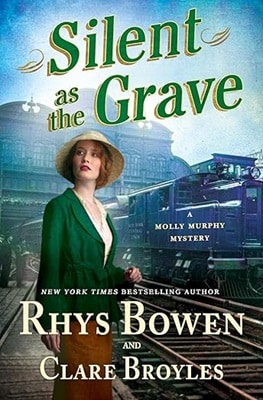Book Review
reviewed by Gail Byrd
Step back into the 1920s in Oak Park, Illinois with its social systems firmly in place, combined with prejudice of the day and the rise of the Chicago Mob. This is the rich background for the murder of an antique shop owner, Mr. Anthony.
Elizabeth, a customer, friend, and the protagonist of this story learns after his death that Mr. Anthony, as she knew him, was actually Mr. Antonelli, an Italian. He had kept his Italian heritage a secret because of the prejudice against Italians, mostly fomented by groups belonging to organizations like the KKK.
Elizabeth is troubled by Mr. Antonelli’s murder, and even more so when the police arrest another Italian, Mr. Briggs. It becomes apparent that this solution is one arrived at in haste because there are so many negative feelings toward the Italian community, and it presents an easy solution. It’s convenient to have the murder officially seen as belonging solely to an ethnic community and therefore nothing to do with the upstanding members of the wealthy, white community that resides in Oak Park.
Elizabeth takes it upon herself to try and solve the murder. She is convinced Mr. Briggs isn’t the murderer and she refuses to judge someone by their ethnicity. This pits her against both the members of the KKK, whose hatred of “others” is rampant and the mob, who believes they are being targeted as the perpetrators by Elizabeth in her quest to free her friend. Both groups set about to cause Elizabeth problems, if not actual physical harm, which puts everyone in her family and close social group at risk.
The book is as much about prejudice, the KKK, and a group known as the Walosas, who spread lies and malicious rumors about anyone who has a different ethnic background than theirs as it is about who murdered a local shopkeeper. Elizabeth manages through a whisper campaign to set one group against the other which helps her lessen the danger to herself as she sets out to discover the guilty party.
As Elizabeth goes about her investigation, she is forced to see herself as the emotionally walled off person she is, a result of the death in the war of her husband of one week and the ultimate loss of their baby. Helping her in this endeavor is Fred, a local attorney who has feelings for her, his Aunt Lucy who is a warm, loving woman on her own; very different from Elizabeth’s rather demanding and socially conscious mother. She also becomes closer with the servants in her house and realizes she has not been as interested in them and their lives as she might have been. Elizabeth is also gifted with a warm, loving father who opens her eye to the reality that while Elizabeth’s mother is demanding in many ways, Elizabeth has rarely bothered to see their relationship from all sides.
In addition to the family dynamics that run throughout, the unvarnished vision of prejudice and its negative effects winds through the book, moving at a pace equal to Elizabeth’s search for the murderer. The book also highlights the lifestyle of many people in the 1920s with the social mores of the age as well as the very strict social order of men vs, women, rich vs. poor, etc. For this reason, the book may represent more than a simple mystery story, but one which also has a message regarding hatred, distrust, and envy and, in the author’s notes, a challenge to modern day society.
I appreciate Severn House Publishing for providing me with an advanced reader’s copy for this review. The opinions expressed here are entirely my own.
More Historical Mysteries
Advertisement
Historical Mystery Articles
Classic Whodunits
The Golden Age of Mystery Fiction
Mysteries Set in the 1940s
This tumultuous decade served as a fertile ground for mysteries
Classics as Mysteries
The Classics are Mysteries, Too










